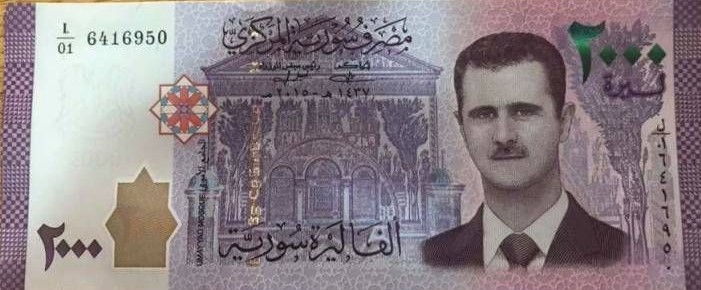There has been much talk recently about the need for a popular boycott of 2,000 Syrian pound banknotes, which have the image of Syrian regime head, Bashar al-Assad. The most recently issued Syrian paper currency was followed by a real boycott by official institutions and local councils in areas outside regime control in northwestern Syria, including Idleb and the Euphrates Shield and Olive Branch operational areas, amid a real collapse of the value of the Syrian pound against foreign currencies and a “historic” collapse of the Syrian economy.
These boycotts came late, as the 2,000-pound note began to circulate in various Syrian areas on Jul. 2, 2017—that is, more than two years ago. But the motive of the boycott today is the pound’s general loss of value, and the ambiguity around conditions of printing the new notes for the Syrian currency issued by the regime during the years of the Syrian revolution—including the 2,000-pound note, in light of the blockade and severe economic sanctions.
Residents of areas outside regime control were cautious of using this note when it entered into the markets—both symbolically, given that it features the face of Assad on the note and the continuing massacres against the Syrian people and him imposing control on areas outside his control, and economically, given that it could contribute to further reducing the value of the Syrian pound. But it soon spread in the market in large numbers and in all commercial and livelihood-related transactions.
Boycotts
Boycotts began two years ago. The Syrian Interim Government headed by Jawad Abou Hatab, decided to prohibit the dealing or trading in the new note directly after its issuance. But the street did not respond to this directive after the currency spread widely and it became difficult to find alternatives. But the boycott campaigns did not stop. The council of Azaz city in northern Aleppo issued a decision to forbid dealing in the 2,000-pound note, while giving a deadline of one month to stop. The decision was imposed on all institutions, departments, exchanges and companies.
In Idleb and its environs, a campaign has begun on a limited scope, limited to some people and store owners, but the note is still being allowed and circulated without opposition from any entity in Idleb.
Brocar Press observed that most companies and exchanges in Idleb province are dealing in the note, but that there is fear by some residents that it could be suddenly banned, inflicting material losses on a personal level.
Russian manipulation
Economic expert Younes Karim told Brocar Press that the Syrian currency in general was locally circulated and did not have foreign demand, considering that Syria imports more than it exports, and that even imports have diminished after the recent events in Lebanon.
He added: “The Russian mafia were paid in Syrian currency for printing the new notes, and not in dollars, while some think that the Russians are continuing to print the Syrian currency.”
Confusion in opposition and regime markets
Karim says that the decision to prevent the circulation of the 2,000-pound note was the right one but that the mechanism to implement it was not correct given the difficulty of dealing with non-Syrian currencies for residents, given that they still buy Syrian goods because they are cheaper and higher quality than others, and that the Syrian currency is easier to deal with and calculate for residents.
Karim told Brocar Press that moving the denomination to regime areas would lead to an increase in inflation levels in the currency and in the areas under its control and therefore in the commercial process. At the same time, the withdrawals of 500 and 1,000 pound denominations would definitely confuse the opposition and regime markets, because it would lead to a shortage of the 1,000-pound note and a large number of 2,000-pound notes with the regime.
Therefore, Karim said, the regime will be forced to deal with the 1,000 and 500 pound notes as well as 2,000, which means disaster and confusion in the commercial process in regime and opposition-held areas.
What does the regime gain from the 2,000-pound note?
Karim said that the Syrian regime is trying to buy hard currency in the 2,000-pound note and to withdraw American dollars from opposition areas, which will support the value of its currency, which was confirmed by a number of exchange and currency dealers in opposition areas, given that commercial operations and therefore exchanges still exist between opposition and regime area.
This article was translated and edited by The Syrian Observer. The Syrian Observer has not verified the content of this story. Responsibility for the information and views set out in this article lies entirely with the author.


